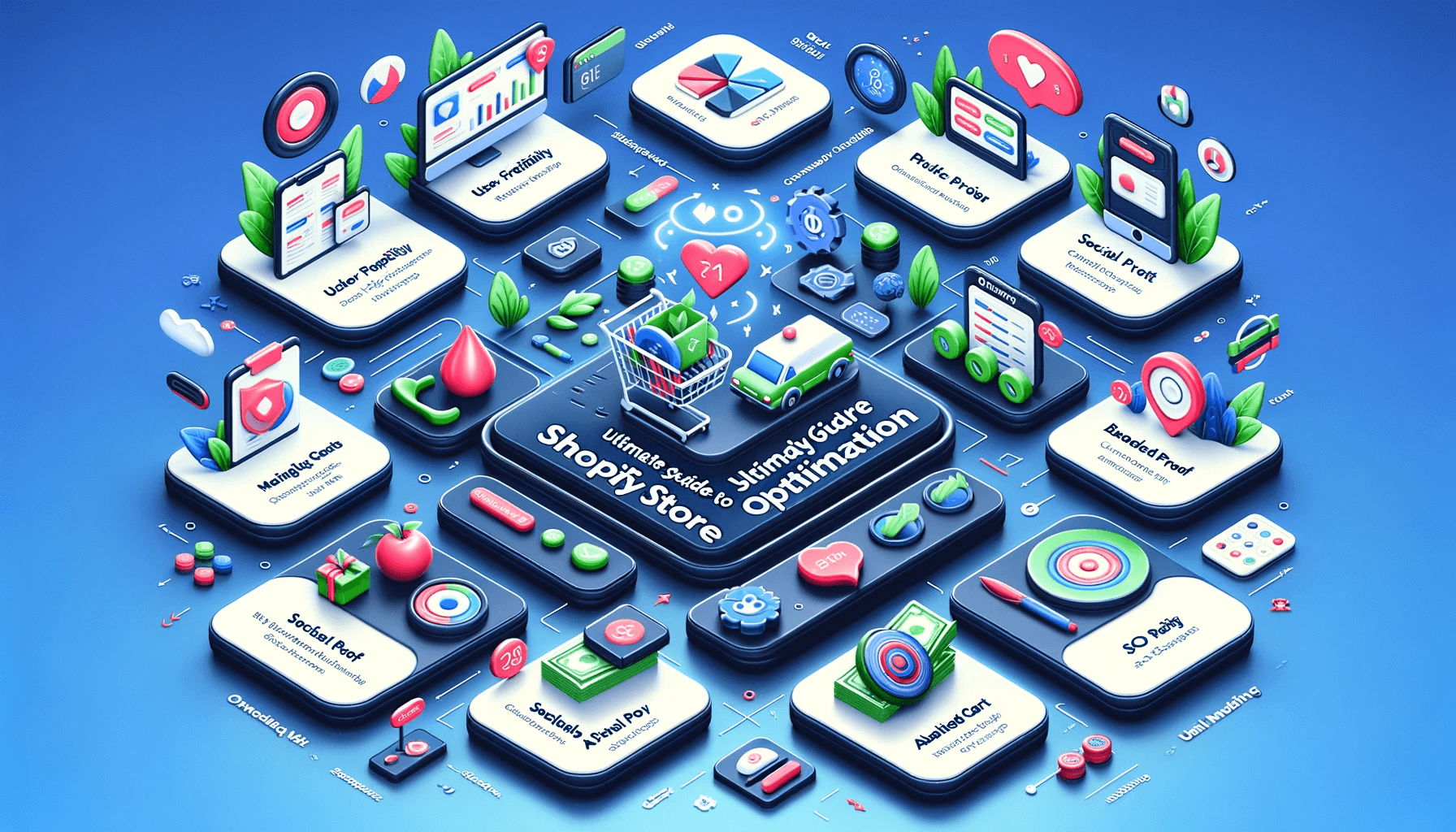
Ultimate Guide to Shopify Store Optimization: Boost User Experience, Conversion Rates, and Sales
When it comes to running a successful e-commerce business on Shopify, store optimization plays a crucial role. By implementing effective techniques and strategies, you can enhance the user experience, increase conversion rates, and ultimately drive more sales. In this comprehensive guide, we will explore various optimization strategies to help you maximize the potential of your Shopify store.
Streamline Navigation and User Experience:
- Simplify your store's navigation menu for easy browsing.
- Ensure clear and intuitive product categorization.
- Implement a search bar to facilitate quick product searches.
- Optimize page loading speed for a faster user experience.
- Create a responsive and mobile-friendly design for seamless browsing across devices.
Compelling Product Descriptions and Imagery:
- Write persuasive and informative product descriptions that highlight unique selling points.
- Use high-quality product images with multiple angles and zoom capabilities.
Clear Call-to-Action (CTA) Buttons:
- Use prominent and visually appealing call-to-action buttons throughout your store.
- Clearly communicate the desired action, such as "Add to Cart," "Buy Now," or "Subscribe."
- Experiment with different button colors, sizes, and placements to optimize conversions.
Optimize Product Pages:
- Including detailed product information, specifications, and features.
- Use bullet points to highlight key benefits and features.
- Showcase customer reviews and testimonials to build trust and credibility.
- Implement product recommendations or related product sections to encourage upselling and cross-selling.
Simplify Checkout Process:
- Enable guest checkout to reduce friction and increase conversion rates.
- Minimize the number of steps required to complete the purchase.
- Offer multiple payment options, including popular gateways like PayPal, Stripe, etc.
- Display trust badges and security seals to reassure customers about the safety of their information.
Implement Abandoned Cart Recovery:
- Set up automated email reminders to recover abandoned carts.
- Offer incentives, such as discounts or free shipping, to entice customers to complete their purchases.
- Personalize the abandoned cart emails to remind customers of the products they left behind.
Leverage Social Proof and Trust Signals:
- Display customer reviews, ratings, and testimonials on your product pages.
- Showcase trust badges, secure payment icons, and certifications to build trust.
- Feature real customer photos and user-generated content to enhance credibility.
Optimize for Search Engines (SEO):
- Conduct keyword research and optimize your product titles, descriptions, and meta tags.
- Generate unique and compelling meta descriptions for each product page.
- Optimize your store's URL structure and create SEO-friendly URLs.
- Build high-quality backlinks and implement a content marketing strategy to improve organic search rankings.
Leverage Email Marketing:
- Implement email capture pop-ups or forms to grow your subscriber list.
- Create personalized email campaigns to nurture leads and promote products.
- Send targeted offers, promotions, and product recommendations based on customer behavior and preferences.
Analyze and Test:
- Utilize Shopify's analytics tools or integrate with third-party analytics platforms to track and analyze store performance.
- Conduct A/B testing to optimize various elements, such as CTA buttons, colors, product page layout, etc.
- Continuously monitor and analyze customer behavior, conversion rates, and sales data to identify areas for improvement.
Conclusion:
Optimizing your Shopify store is an ongoing process that requires continuous analysis, testing, and refinement. By implementing the techniques and strategies outlined in this guide, you can enhance the user experience, boost conversion rates, and ultimately drive more sales. Remember to stay updated with the latest industry trends and continuously adapt your optimization strategies to meet the evolving needs and preferences of your customers.
